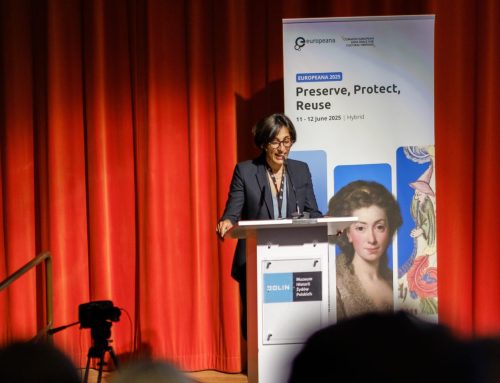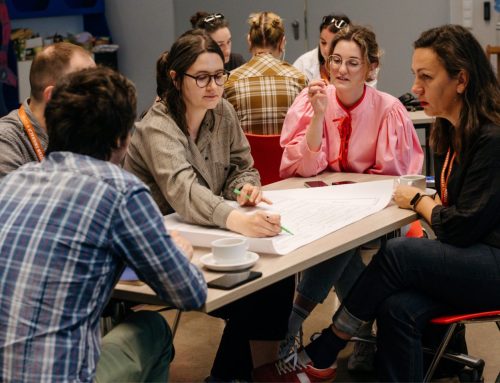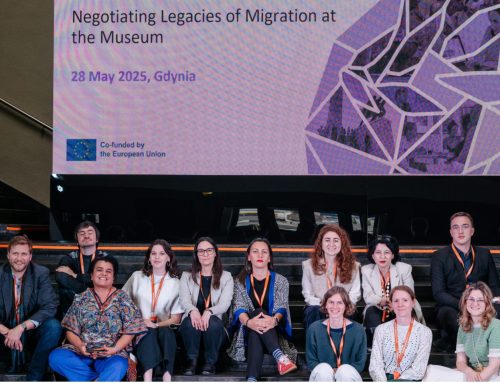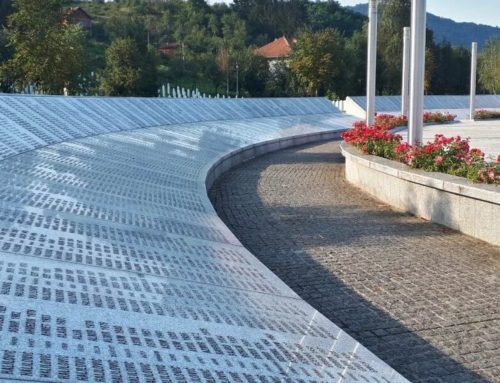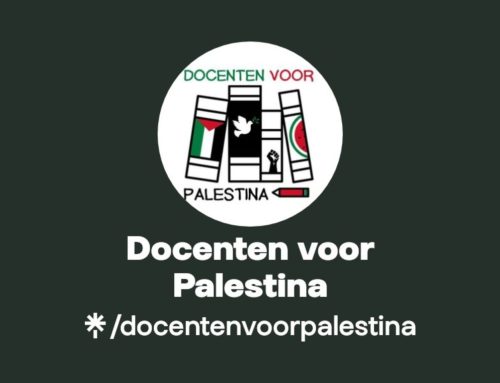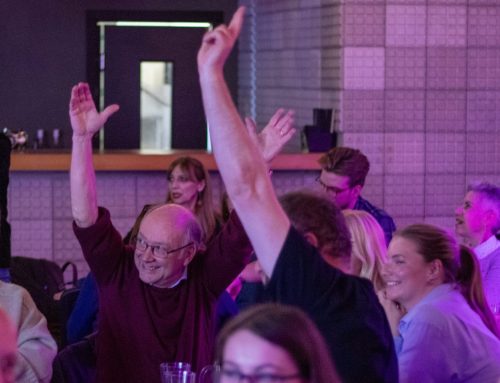This is the first part of a report made by Meena Pankaj Malhotra and Senada Jusic on their study visit to Colombia. It is the tenth article in a series of blogposts and reports on all study visits made for the project “Dealing with the Past in History Education”. In this project civil society actors from different backgrounds, visit schools and institutions in countries that are struggling with a difficult past.
For over five decades Colombia has experienced intense violence associated with multiple unresolved social and political conflict—a violence that has been changing its characteristics over the decades with regards to its agents, motivations, intensity and mechanisms. Hundreds of thousands of fatalities have occurred by massacres and assassinations. Over and above that, innumerable Colombians have become victims of forced disappearance, forced displacement, abduction, extrajudicial executions, unlawful recruitment, torture, abuse, and sexual violence. Resistance to suffering is inherent in human nature. Today in Colombia one sees a strong sense of this resistance—in political will, in civil society, in individuals. Our study visit intends to highlight some of these efforts by individuals, civil society, education institutions and the state.
SCHOOL VISITS
Our hosts, CNMH, had selected two Colombian schools (one public and one private) as case studies for our research on dealing with difficult pasts in post conflict society. Our first visit was to the public school — Colegio Leonardo Pozada Pedraza followed by a vist to the private school— Colegio Campoalegre. Both the schools have their own approach to confront their difficult violent past along with the reality in which they live. Their approaches and methods are different, but in accordance with the needs and background of students who attend these schools.
Colegio Leonardo Pozada Pedraza uses art, literature, film and theater as a medium to educate and sensitize students about what is happening in society and how peace can be restored. Teachers Adriana Abaunza, Diana Beltrán, and Bibiana Seguro took personal initiative along with a group of students interested in the subject of human rights education to think about how school, literature, and history in Colombia have contributed to the construction of falsehoods and realities regarding human rights in the country. Looking at the concerns of young people together, they intended to propose and carry out an inter institutional forum, which would enable them to investigate and understand students’ thoughts not only in the Leonardo Posada Pedraza School but also involve students from other schools and places for an open and frank dialogue in order to unearth diverse voices on the issue of human rights, Colombian literature, and school. Art is one of the most powerful means of expression and also one of the most powerful means of therapy. Engaging students in art and literature helped with dealing with individual internal conflicts, too.
They were convinced that perhaps the only way for their country to find a promising future in which citizens can have a dignified life and develop fully is through education in Human Rights. It would encourage them to relate to their environment and thus reduce intolerance and levels of violence. However, this process of educating in human values must be initiated at home and it must be strengthened in the school if it were to have far reaching consequences. This important realization has made the government and public educational policy makers’ work with greater focus and invited Colegio Leonardo Pozada Pedraza for human rights training .The project has been very successful and the work continues. In 2016 another new project began— Youth Thinking about Peace (Los jovenes se piensan La Paz). The goal of this project was to recontruct the past to develop critical thinking by researching and writing about all the actors of the conflict including the perpetrators, the victims, the para military, and the guerillas. We interacted with the students and found that they welcome this activity and enjoy working on the project. They were extremely interested, curious, articulate, and active during the dialogue session as well.
The other visit to a private school Colegio Campoalegre was a very different experience. In every imaginable way the two schools were different from each other. At Colegio Campoalegre the first impression was that of affluence. Set in an extremely picturesque surrounding with mountains you could touch by simply leaning out of the classroom window, this school simply took our breath away at first glance. The physical difference aside, after interaction with the students, we found the same level of interest and passion in the projects they were involved in as the students of Leonardo Posada.
The project being implemented here is based on the premise of lived experience that brings about a genuine deep change from within. Developed and led by the individual passion of just one teacher, Ana Maria Duran, it involves students travelling to El Salado, a village that was deeply effected by the conflict in 2000 and living there for a period of a week to ten days and interacting and working within the community of survivors. This first hand experience for students coming from privileged backgrounds proves to be a very valuable education.
The group that we interacted with had recently returned from their visit to the town that had been battered with violence. During their visit they helped build four dry toilets on sidewalks that do not have access to water supply. They donated school desks, soccer uniforms, and other useful items. They interacted with members of the community, learning about their traditions and culture, their music, and their very difficult past. The students were received by the locals as if they were old friends and Lucho Torres, icon of the town, personally accompanied them around town, telling them the history of this corregimiento where 1500 people live and are with great resilience building a future on the ashes of their difficult past.
Late February 2000 the town experienced almost two weeks of torture, beheading, and rape of an undetermined number of defenseless peasants, including a six-year-old girl and a woman of 65. Perpetrated by at least 450 men belonging to the paramilitary group that also destroyed the houses and the commerce of the population, this is one of the ugliest massacres in the country’s violent past.
Personally coming face to face with a history that they had so far only learned about objectively made the students introspective and encouraged them to actually analyse what they came back with. One of the students who was the daughter of a military member recounted how throughout childhood she felt deprived because her father was always away on work. Her father had eventually been killed due to the conflict, and she carried deep feelings of anger due to this loss. The visit to El Salado, she said to us, made her understand the true meaning of forgiveness. She realised there were hundreds like her who had experienced loss, and who was to judge and decide what justice meant under circumstances of this nature.
This project which is implemeted as part of the Social Responsibility and Social Pedagogical approach of the school has been extremely successful and they plan to continue this with each group of Grade 10 students.
MINISTRY OF EDUCATION
One of the visits on our study trip was to the Ministry of Education in Bogota, Colombia. We spoke with a group of seven people who work directly with the Minister of Education on formulating policy, pedagogy processes, best practice etc.
We began the meeting by explaining the background of our visit and why we chose Colombia. Senada and I come from a background where working with government is really not the easiest of options. Having already been exposed to the workings of civil society and education institutes over the past two days we were extremely curious about the realities in Colombia. Our primary question to the ministry related to the symbiosis between the government and civil society. We enquired about the structures that are in place and interestingly Professor Chaux said he could not think of structures—he preferred thinking about people. He went on to admit that Colombia has achieved a level of cooperation between various stakeholders that surprises the world and is quite admirable. His colleagues in Canada express wonder over the ease with which researchers and the ministry function together. He has been helping the ministry for thirteen years.
We also learned about the autonomous nature of the workings of the Ministry. While this can be a very useful reality, in Colombia this is actually a cause for concern as it is leading to a huge gap between state policy and actual classroom practice. Peace Studies was made mandatory across the country and across all stages of education. However, lack of proper material and lack of any policy or guidelines related to textbook publishing have led to an overall disarray in peace and human rights education. Currently this is the ministry’s prime concern and to overcome the problems in this area, they are working towards bringing together NGO’s and local secretariats of education. However, because the education secretariats are decentralized, the ministry has implemented a policy of direct collaboration with civil society in order to speed up the implementation of new policies. The civil society organizations design and develop pedagogical materials based on policies and make them available for classroom use. In some cases they are also directly involved in classroom implementation. Also, teachers have taken great initiative and created many networks across the country enabling them to work together and share ideas and resources.
Colombia is very decentralised. The government does not develop a single national level curriculum. The schools do. Government has developed some guidelines which are strongly recommended, but not mandatory. The students undergo a national test that measures how they are faring in terms of the recommended guidelines. In 2004 the government developed standards for mathematics, language, natural science, social sciences, and for citizenship competencies. Students undergo tests in 5th, 9th and 11th grade that test competencies of pluralism, good citizenship, and democratic values based on the standards. The schools, local secreteriats, and NGO’s are supposed to develop tools that promote competencies stated in the government guidelines. There is substantial work being done in this area but definately not enough. There is a need for many stakeholders to work harder in this area. In 2013 a new law was implemented that made it mandatory for schools to work on preventing aggression, violence, and bullying. Those who do not are liable for legal action taken against them by any citizen. And for private schools, if protocols are not adhered to the government can revoke the school’s licence. However, so far no legal action of this nature has been taken against any institution. This was followed by another law that made peace studies and human rights education mandatory since 2015. However this law was implemented without the consultation or support of the Ministry of Education, and there is a big gap between the state policy and what is actually happening on the ground. The proper tools for implementing this most recent law do not exist.
The discussion on autonomy brought us to the question of textbooks, and we discovered that there is a huge problem in this area. Schools are prescribing their own textbooks with publishers deciding what to publish in the textbooks. But often within the same region there are no similarities in what is being taught. The Ministry offers extra materials but there is no guarantee on how these materials should be used. Usage of these materials is up to individual teachers.
And finally we came to the most important question—what is the Ministry’s policy with regards to Colombia’s conflicted past. In a post conflict society, where a classroom has students that have personal histories of either being children of victims or perpetrators, how does one deal with this and how does the history teacher deal with this? The answer according to Olga is two fold; one is the teacher’s competencies. Teachers themselves have been through the violent past and in most cases have been affected by the violenc and they have lived the history they are teaching. They have to build the strength and resilience to be neutral and take an unbiased position. The other aspect is the tools, material, and pedagogy. The Miniistry has yet to develop these to help the teachers.
In 2015 the ministry held a series of interactions with teachers to suggest how recent difficult histories may be approached in the classroom and one of the major suggestions was to start with the point in time that the students were living at the moment and then connect it backwards to the past.
This is a struggle still because the peace accord is very recent—2016—and there is development in best practise related to teaching the recent difficult Colombian past. Centre for Historical Memory has done some wonderful work in this area and the Ministry is hugely inspired by the work that Facing History And Ourselves is doing and plans to pilot projects based on their approach. They hope to contruct bridges between the recent and distant past by studying social dynamics and how identity plays a role as well as how prejudice functions. Their goal is to not just look at conflicts from the past but also at the stories of peaceful positive resistance.
However despite all these efforts by all stakeholders concerned, the discussion on how much to teach of the recent past and where to start continues. They have not arrived at a consensus yet..
There is a lot creativity happening in Colombia! And yet how to deal with the difficult past is not an easy question to answer. In Colombia it is currently an ongoing movement involving some very dedicated passionate people.
This concludes the first part of the report of a study visit to Colombia made by Meena Pankaj Malhotra and Senada Jusic. This study visit has been a part of the project “Dealing with the Past in History Education”, supported by the Robert Bosch Stiftung. For more information on this project, please visit the project page.



